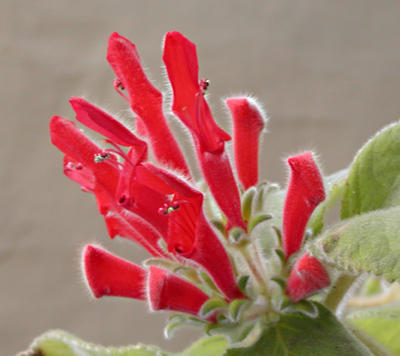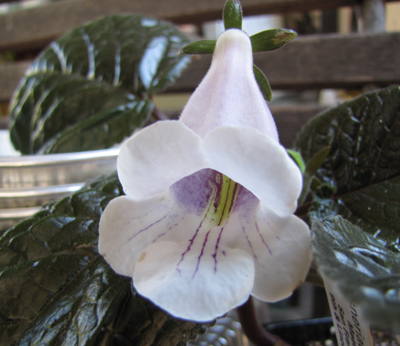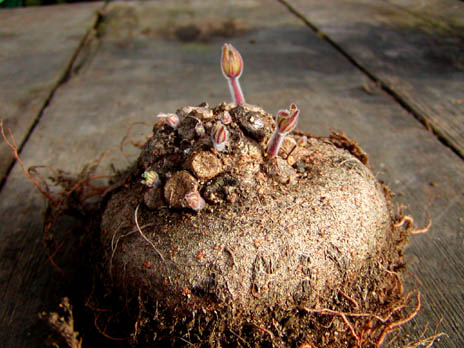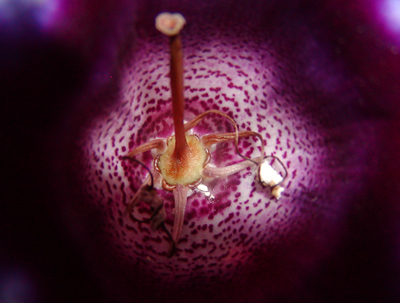What Is A Sinningia?
A sinningia has nothing to do with misbehavior or penance or punishment. Instead it is a totally innocent kind of plant which was named after a German guy named Sinning. There is a picture of Wilhelm Sinning here. The German word Sinn means sense, in just about as many ways as the English word, but may or many not have anything to do with the German guy.
Sinningia does have to do with temptation, however. Once you've grown one, you'll want to grow more.
There are more than 60 species of sinningia, most of them from Brazil. Those that aren't from Brazil are from neighboring parts of other countries, like Argentina, Paraguay, Uruguay, and Bolivia.
More technical information about the placement of the genus Sinningia is available here.

Most sinningias have red or orange tubular flowers, 1-7 cm [0.4-2.5 inches] in length. The shape and color are due to being pollinated by hummingbirds. The narrow tube keeps out other nectar feeders.
More information about this plant can be seen here.

A smaller number of sinningias have wider, bell-shaped flowers, usually white or lavender or purple. These flowers attract bees but make it difficult for hummingbirds to reach the nectar.
More information about this plant can be seen here.

